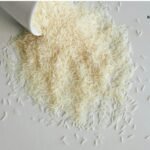Now Reading: Unlocking Restful Nights: The Truth About Mouth Taping for Better Sleep
- 01
Unlocking Restful Nights: The Truth About Mouth Taping for Better Sleep

Unlocking Restful Nights: The Truth About Mouth Taping for Better Sleep
Have you ever wondered if a small change to your sleep routine could unlock more restful nights? Mouth taping is gaining attention as a natural way to improve sleep. In this post, we explain what mouth taping is, how it works, its benefits, and the risks. We also discuss who should try it and who should avoid it. Let’s dive in!
What Is Mouth Taping?
Mouth taping is the practice of applying a small strip of tape over your mouth before you sleep. It encourages breathing through your nose. Nasal breathing helps filter, warm, and humidify the air you breathe. This simple change might lead to better sleep habits and improved overall comfort at night.
How Does Mouth Taping Work?
The Mechanism Behind It
When you tape your mouth, you force your body to adopt nasal breathing. Your nose handles air more efficiently than your mouth. This can improve oxygen intake and reduce the likelihood of snoring. The method supports a more natural and soothing sleep cycle.
The Process in Simple Terms
- Consistent Breathing: Keeps your breathing regular all night.
- Air Quality: Your nose filters and adjusts the air temperature.
- Restorative Sleep: Better breathing may lead to fewer sleep interruptions.
Using mouth tape helps retrain your sleep pattern slowly. It may seem unusual, but the science behind nasal breathing is promising.
The Benefits of Mouth Taping
Enhancing Sleep Quality
Many users report waking up feeling more refreshed. Less mouth breathing during sleep often reduces dry mouth. Nasal breathing can minimize snoring, resulting in a quieter night.
Unexpected Perks
- Improved Oxygen Flow: Increased oxygen might boost brain function the next day.
- Better Oral Health: Reducing mouth dryness helps protect your oral tissues.
- Calmer Sleep: Some users find that improved breathing reduces mild anxiety.
These benefits make mouth taping an appealing, low-cost option for many looking for natural sleep improvement.
Who Should Use Mouth Taping?
Ideal Candidates
Mouth taping might work best for those who:
- Suffer from mild nasal congestion.
- Experience dry mouth upon waking.
- Notice occasional snoring without underlying severe issues.
- Seek a natural adjunct to improve their sleep habits.
If you fall into these categories, mouth taping may complement your sleep routine. It is a tool to enhance natural breathing during sleep.
Risks and Safety Considerations
Who Should Avoid It?
Mouth taping is not for everyone. Certain conditions need extra caution:
- Severe Breathing Problems: If you have chronic respiratory issues or severe asthma, avoid it.
- Sleep Apnea: Those who already suffer from sleep apnea must consult a doctor before trying this method.
- Nasal Obstructions: If your nasal passages are frequently blocked, mouth taping may worsen breathing difficulties.
Additional Risks
- Skin Sensitivity: Not everyone’s skin reacts well to tape.
- Discomfort: The feeling of having your mouth taped may cause anxiety or stress at first.
- Incorrect Application: Improper use of tape can lead to issues, such as partial blockage of airflow.
Always research and try the method cautiously. Consult with a healthcare provider before starting, particularly if you have any underlying conditions.
How to Get Started Safely
Step-by-Step Guide
- Prepare Your Face: Clean your skin thoroughly. Dry it to avoid irritation.
- Choose the Right Tape: Ensure you use hypoallergenic, skin-safe tape.
- Apply Gently: Start by taping just the width of your mouth.
- Test Short Periods: Try the tape during a short nap before a full night’s sleep.
- Monitor Your Sleep: Keep a sleep journal. Note any improvements or discomfort.
Tips for a Positive Experience
- Start Slowly: Test the method for a few hours before full-night use.
- Establish a Routine: Combine it with other good sleep practices, such as a regular bedtime.
- Trust Your Body: If you feel uneasy or experience breathing issues, remove the tape immediately.
Taking these steps can help integrate mouth taping smoothly into your sleep routine.
Additional Insights and Recommendations
In addition to mouth taping, consider enhancing your sleep environment.
- Improve Air Quality: Use an air purifier in your bedroom.
- Sleep Position: Experiment with your sleeping position for optimum breathing.
- Relaxation Techniques: Engage in calming pre-bedtime routines, like reading or gentle stretches.
These extra measures help ensure a full package toward achieving better sleep.
Final Thoughts
Mouth taping is more than a trendy idea. It may help improve sleep quality by promoting nasal breathing and reducing snoring. However, it is not risk-free. Only those with mild sleep-related issues should try it after consulting a healthcare provider. If done correctly, it can be a simple, affordable way to enhance your nightly rest. Remember, every individual is different, so listen to your body.
Disclaimer: This article is for informational purposes only. It is not a substitute for professional medical advice. Please consult with a healthcare provider before trying mouth taping.











